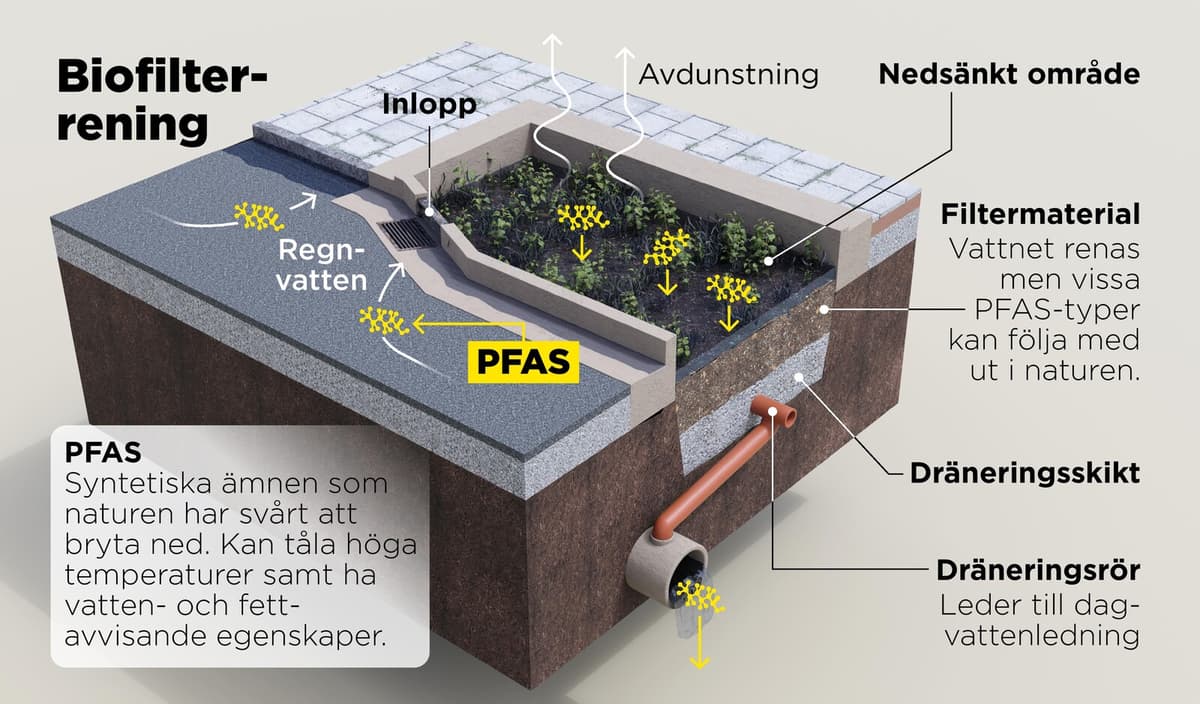PhD student Ali Beryani has, together with the construction company NCC and researchers at Ohio State University, investigated 20 so-called biofilters in the USA.
Passing through the filter
Biofilter purification is a relatively inexpensive and smooth way to purify rainwater, and is based on the same principle worldwide. Rainwater is collected and allowed to flow through a biofilter, which can consist of sand, for example. Dirt and pollutants are left behind in the filter before the water eventually flows out into watercourses.
However, researchers have not previously known how well biofilters are at collecting PFAS, the so-called "forever chemicals". These potentially toxic, highly fluorinated and slowly degradable substances come from everything from firefighting foam to clothing and cars, and can follow the rainwater.
Beryani and his colleagues found a large amount of PFAS in the biofilter facilities, but not just at the top, where most pollutants are collected, but in all layers. The fact that the molecules follow the water through the filter layers probably means that some follow the water out into watercourses and the environment.
New filters may be needed
Above all, the use of PFAS should be reduced, since these substances are so difficult to purify. And if biofilters are to be more effective at capturing PFAS, thousands of existing facilities may need to be adapted. It may also be necessary to add substances that are better at absorbing PFAS, such as activated carbon or iron, or to review the type of sand used.
In the next study I'm working on now, we'll look at exactly how effective additives can affect pollutants, says Beryani.
Probably, the solutions will look different in different places, depending on the types of PFAS present.
They should be targeted, because there is no single solution that magically works for all pollutants, since there are so many different ones in rainwater, he says.
The study has been published in the scientific journal Environment Science & Technology.
PFAS are human-made chemicals that break down extremely slowly and therefore accumulate in nature and in our bodies. Some are toxic and can increase the risk of various negative health effects.
PFAS have been manufactured since the 1950s and are, among other things, dirt- and fat-repellent. They are found in everything from makeup, impregnation, popcorn bags, firefighting foam, and solar cells.
PFAS do not occur naturally in nature, but are now found everywhere. For example, millions of Europeans may be exposed to high levels in their drinking water.
Source: The Chemicals Agency
In the study, 20 biofilter facilities in the US states of Ohio, Michigan, and Kentucky, which have been in operation between 8 and 16 years, were investigated.
A biofilter facility consists of approximately one meter of, for example, soil or sand, which collects rainwater from, among other things, rain. The water flows through the filter layers, where pollutants are left behind. At the bottom, the purified water is collected and led further into the piping network and out into lakes and watercourses.
The study has been published in the scientific journal Environment Science & Technology.





